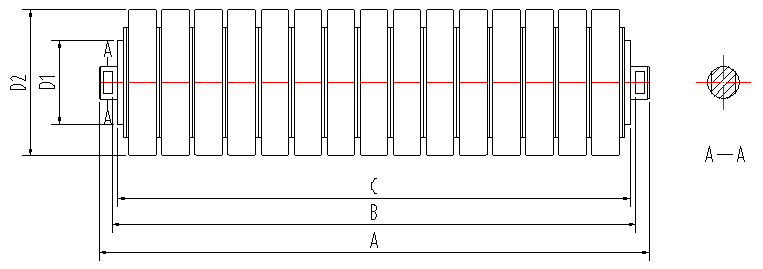 Afrikaans
Afrikaans  Albanian
Albanian  Amharic
Amharic  Arabic
Arabic  Armenian
Armenian  Azerbaijani
Azerbaijani  Basque
Basque  Belarusian
Belarusian  Bengali
Bengali  Bosnian
Bosnian  Bulgarian
Bulgarian  Catalan
Catalan  Cebuano
Cebuano  Corsican
Corsican  Croatian
Croatian  Czech
Czech  Danish
Danish  Dutch
Dutch  English
English  Esperanto
Esperanto  Estonian
Estonian  Finnish
Finnish  French
French  Frisian
Frisian  Galician
Galician  Georgian
Georgian  German
German  Greek
Greek  Gujarati
Gujarati  Haitian Creole
Haitian Creole  hausa
hausa  hawaiian
hawaiian  Hebrew
Hebrew  Hindi
Hindi  Miao
Miao  Hungarian
Hungarian  Icelandic
Icelandic  igbo
igbo  Indonesian
Indonesian  irish
irish  Italian
Italian  Japanese
Japanese  Javanese
Javanese  Kannada
Kannada  kazakh
kazakh  Khmer
Khmer  Rwandese
Rwandese  Korean
Korean  Kurdish
Kurdish  Kyrgyz
Kyrgyz  Lao
Lao  Latin
Latin  Latvian
Latvian  Lithuanian
Lithuanian  Luxembourgish
Luxembourgish  Macedonian
Macedonian  Malgashi
Malgashi  Malay
Malay  Malayalam
Malayalam  Maltese
Maltese  Maori
Maori  Marathi
Marathi  Mongolian
Mongolian  Myanmar
Myanmar  Nepali
Nepali  Norwegian
Norwegian  Norwegian
Norwegian  Occitan
Occitan  Pashto
Pashto  Persian
Persian  Polish
Polish  Portuguese
Portuguese  Punjabi
Punjabi  Romanian
Romanian  Russian
Russian  Samoan
Samoan  Scottish Gaelic
Scottish Gaelic  Serbian
Serbian  Sesotho
Sesotho  Shona
Shona  Sindhi
Sindhi  Sinhala
Sinhala  Slovak
Slovak  Slovenian
Slovenian  Somali
Somali  Spanish
Spanish  Sundanese
Sundanese  Swahili
Swahili  Swedish
Swedish  Tagalog
Tagalog  Tajik
Tajik  Tamil
Tamil  Tatar
Tatar  Telugu
Telugu  Thai
Thai  Turkish
Turkish  Turkmen
Turkmen  Ukrainian
Ukrainian  Urdu
Urdu  Uighur
Uighur  Uzbek
Uzbek  Vietnamese
Vietnamese  Welsh
Welsh  Bantu
Bantu  Yiddish
Yiddish  Yoruba
Yoruba  Zulu
Zulu A Comprehensive Overview of Key Components in Conveyor System Design and Functionality
The Essential Components of Conveyor Systems
Conveyor systems are an integral part of various industries, including manufacturing, warehousing, and logistics. They facilitate the movement of goods, raw materials, and products efficiently, significantly improving productivity and reducing manual labor. To understand how conveyor systems function, it is essential to explore their key components.
1. Conveyor Belts
The conveyor belt is the most recognizable part of a conveyor system. It acts as a continuous loop that transports materials from one location to another. Conveyor belts can be made from various materials, including rubber, fabric, plastic, and metal, each chosen based on the specific application and load requirements. The belt's design, whether flat, modular, or troughed, also plays a crucial role in the efficiency and suitability of the conveyor system for different tasks.
2. Drive Unit
The drive unit powers the conveyor belt by providing the necessary motion to transport items. It consists of a motor, gearbox, and other components that work together to convert electrical energy into mechanical energy. The motor choice may vary between electric, hydraulic, or pneumatic, depending on the system's size and power needs. A properly selected drive unit ensures the conveyor operates smoothly and reliably.
Rollers are cylindrical components that support the conveyor belt and facilitate its movement. They can be located at various points, including at the drive unit and along the belt's length. Idlers, on the other hand, help maintain the belt's tension and alignment, preventing it from slipping or misalignment during operation. Both rollers and idlers are typically made of steel or plastic and are crucial for reducing friction and wear on the belt, thus extending its lifespan.
conveyor system parts

4. Chassis and Frame
The chassis or frame of a conveyor system provides structural support and stability. Made from materials such as steel, aluminum, or a combination of both, the frame must be designed to withstand the weight and stress of the conveyed materials. An engineered frame also allows for easy assembly and customization based on the specific requirements of the system, including height, length, and angle.
5. Controls and Sensors
Modern conveyor systems are often equipped with sophisticated control systems and sensors that enhance their functionality. Control panels allow operators to manage and monitor the conveyor's operation, using buttons, switches, or touchscreens. Sensors can detect the presence of items on the conveyor, measure speed, and identify potential malfunctions. These components contribute to improved efficiency and safety in operations.
6. Side Guards and Barriers
Safety is a critical consideration in the design of conveyor systems. Side guards and barriers are often installed to prevent items from falling off the sides of the conveyor while in motion. These components not only protect the conveyed materials but also help to keep personnel safe by minimizing the risk of accidents related to moving machinery.
Conclusion
In summary, conveyor systems consist of several essential parts that work together to facilitate the efficient movement of goods. From the conveyor belts that transport materials to the drive units that provide power, each component plays a vital role in the overall effectiveness of the system. Understanding these parts can help businesses optimize their operations, enhance safety, and improve productivity. As industries continue to evolve, so too will the technology and design of conveyor systems, adapting to meet the growing demands of a fast-paced world.
-
Revolutionizing Conveyor Reliability with Advanced Rubber Lagging PulleysNewsJul.22,2025
-
Powering Precision and Durability with Expert Manufacturers of Conveyor ComponentsNewsJul.22,2025
-
Optimizing Conveyor Systems with Advanced Conveyor AccessoriesNewsJul.22,2025
-
Maximize Conveyor Efficiency with Quality Conveyor Idler PulleysNewsJul.22,2025
-
Future-Proof Your Conveyor System with High-Performance Polyurethane RollerNewsJul.22,2025
-
Driving Efficiency Forward with Quality Idlers and RollersNewsJul.22,2025





























